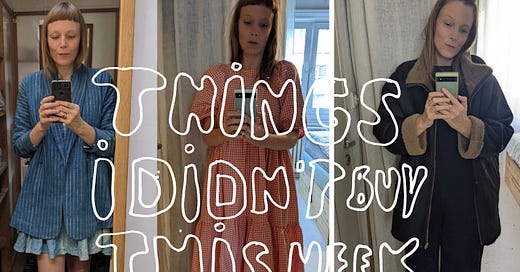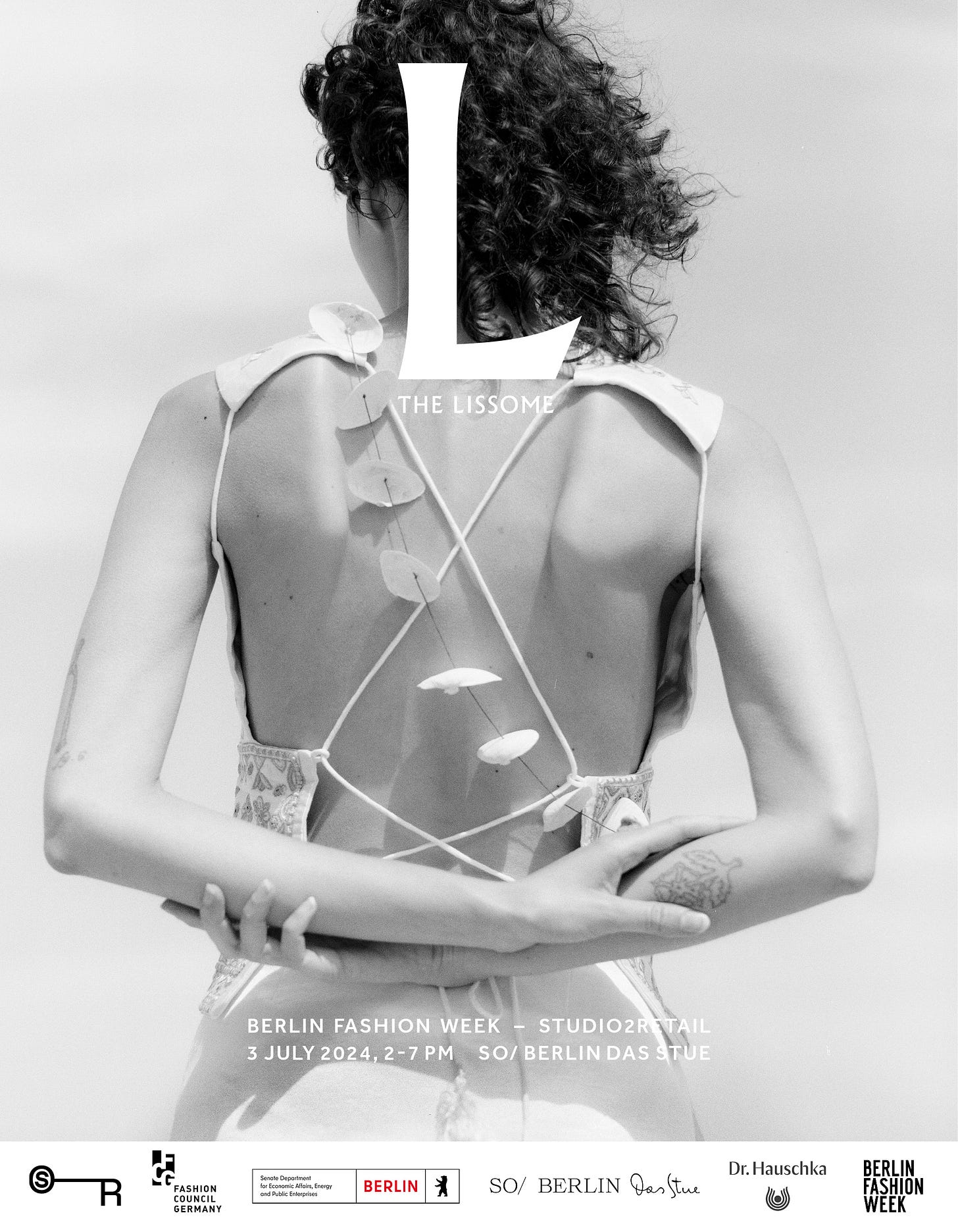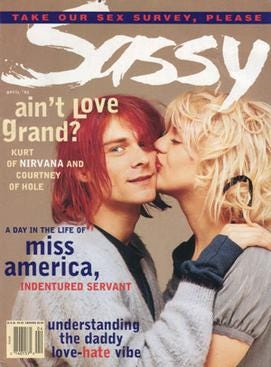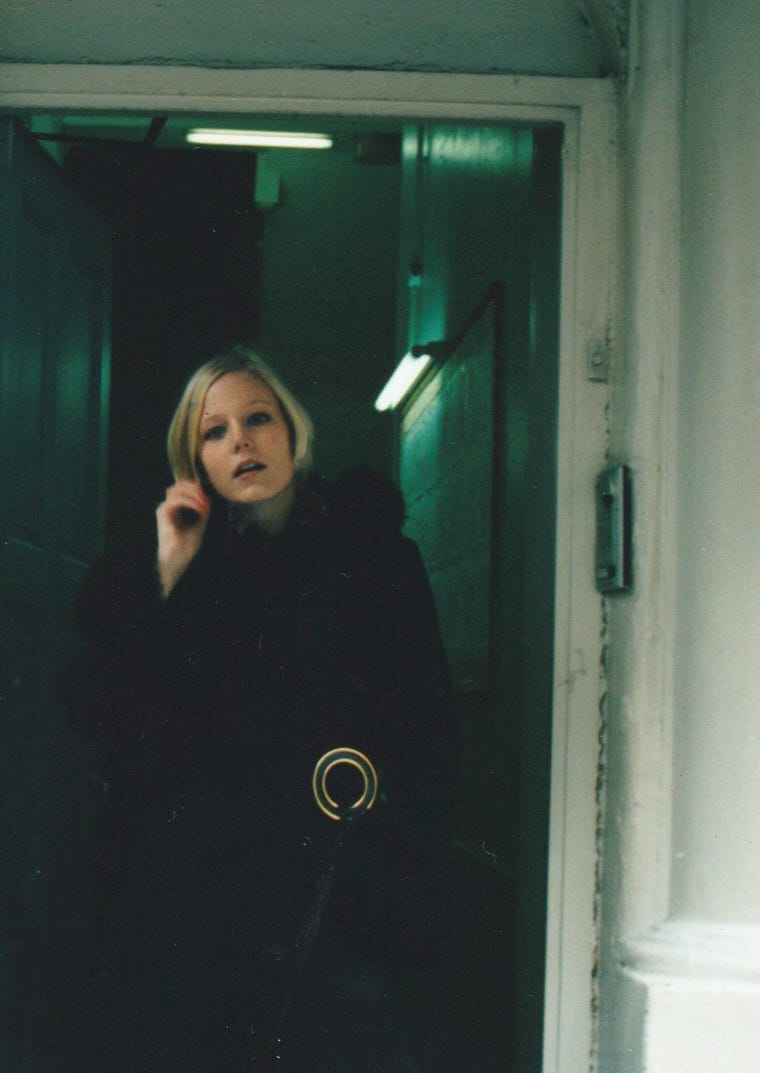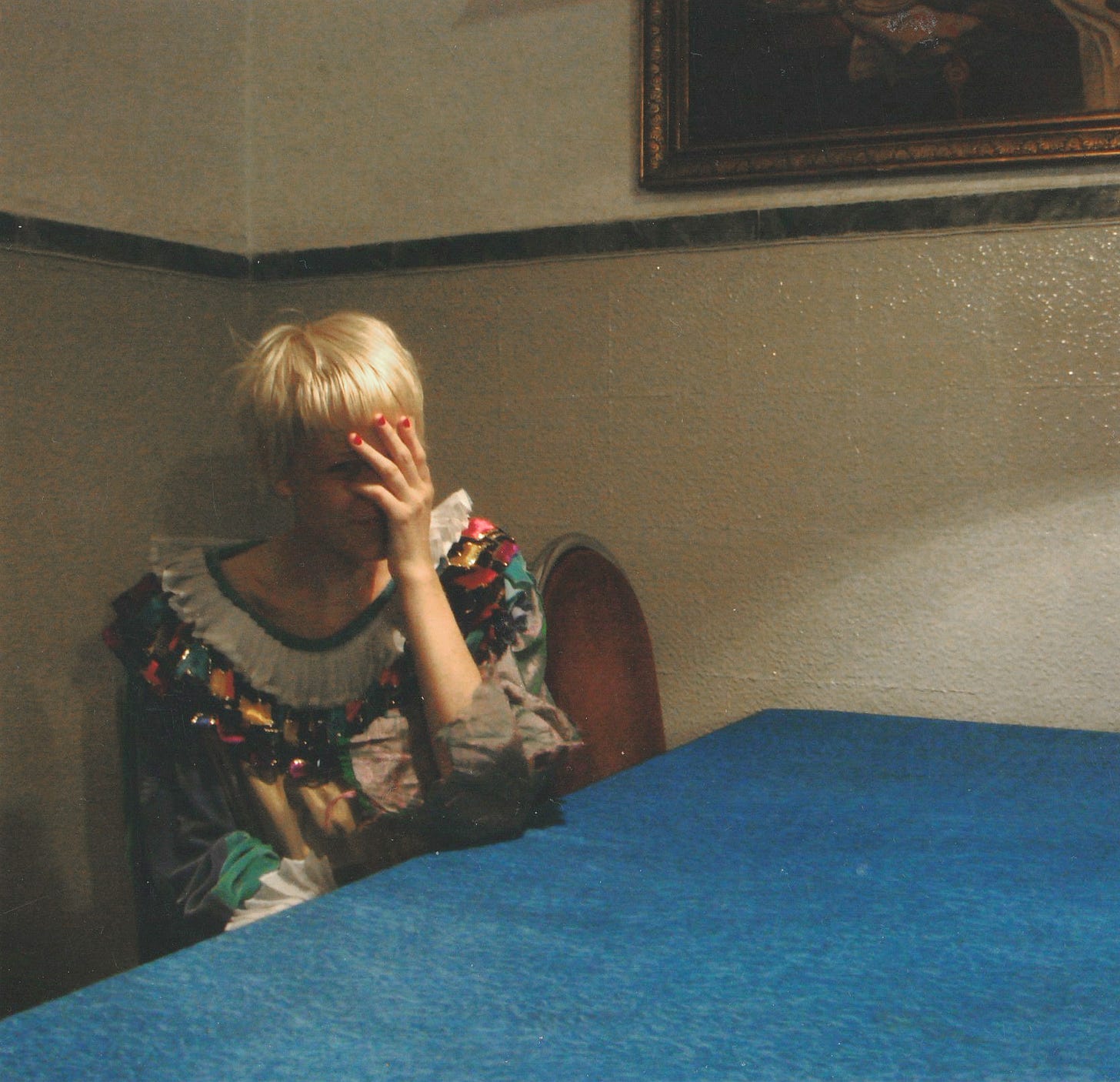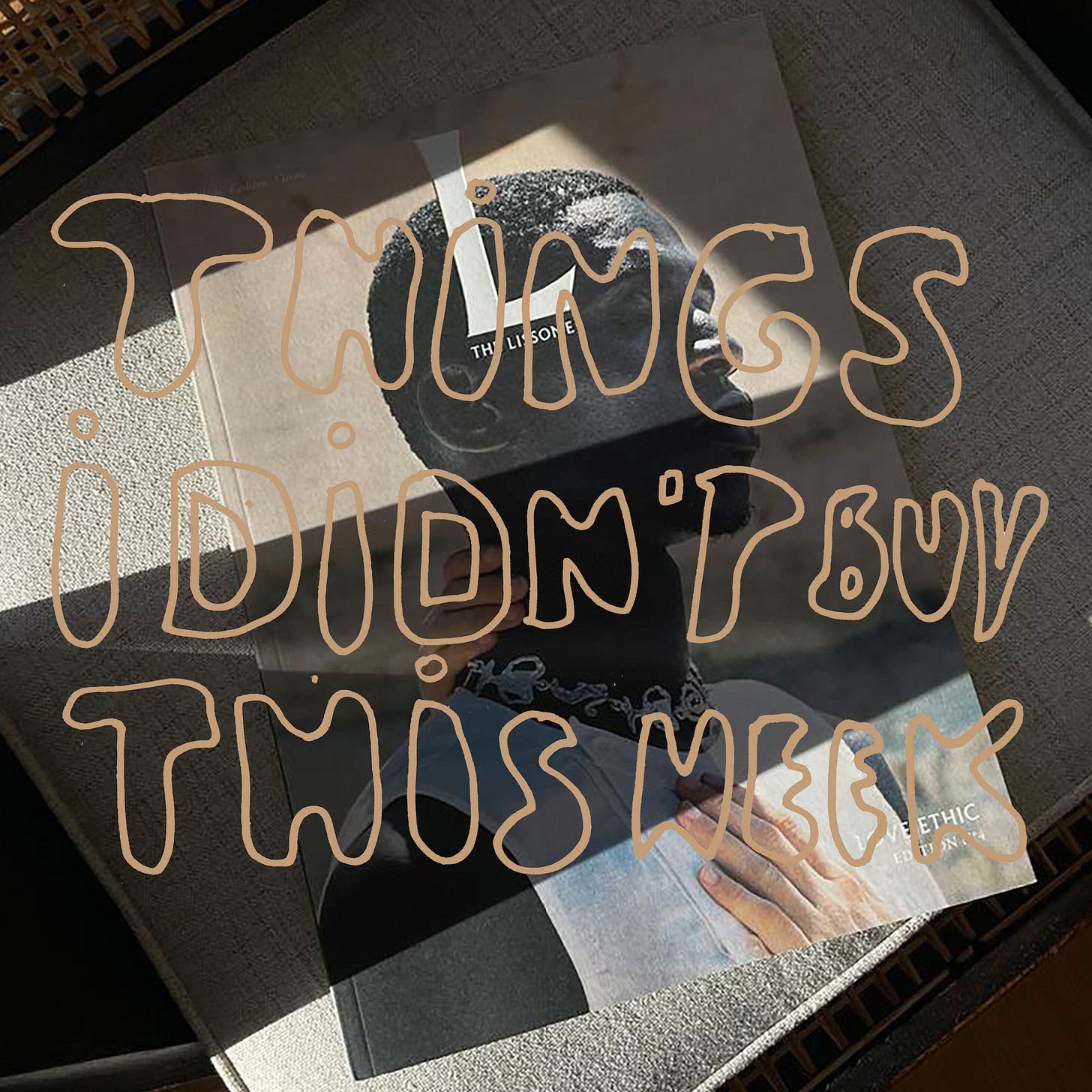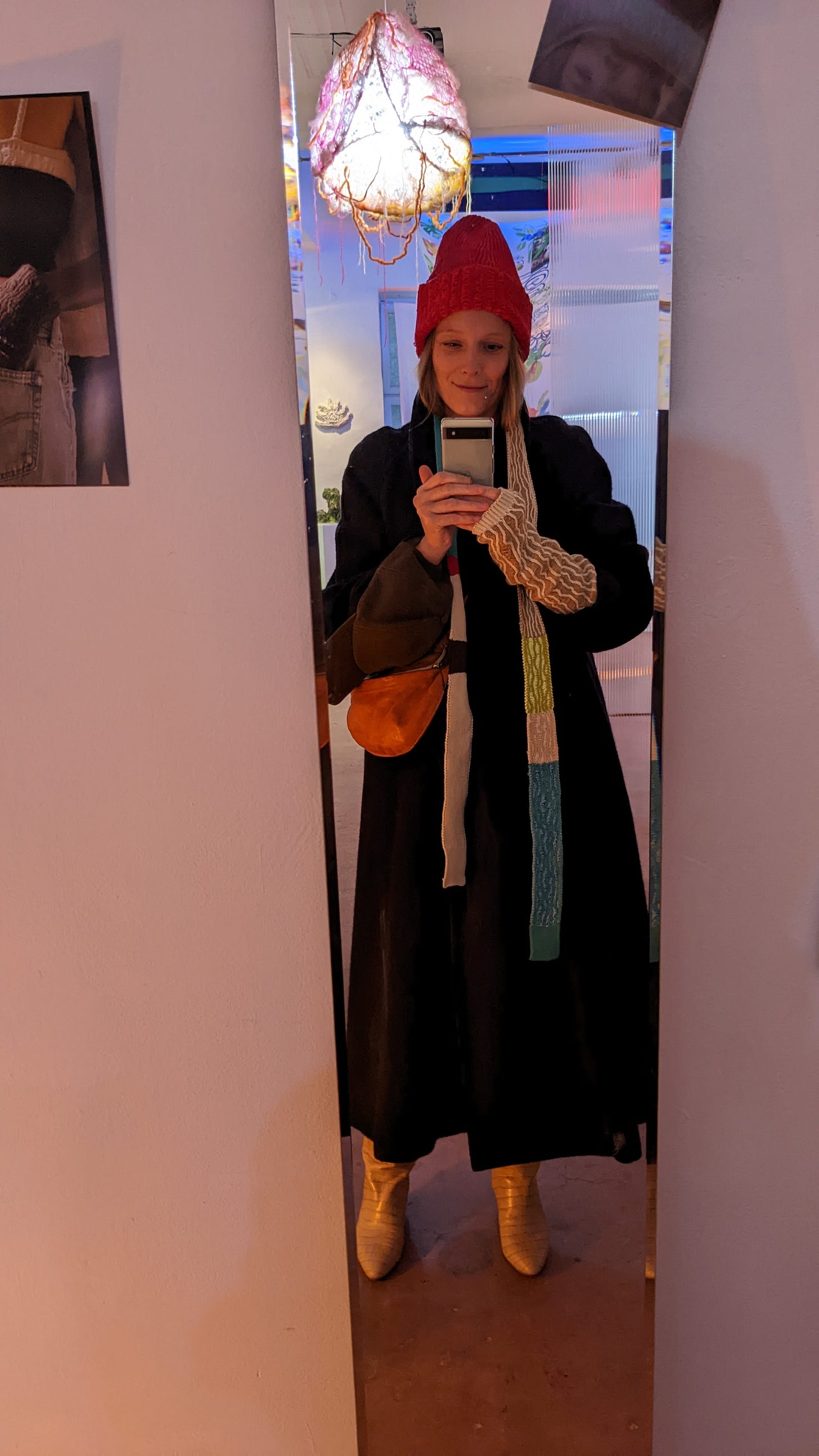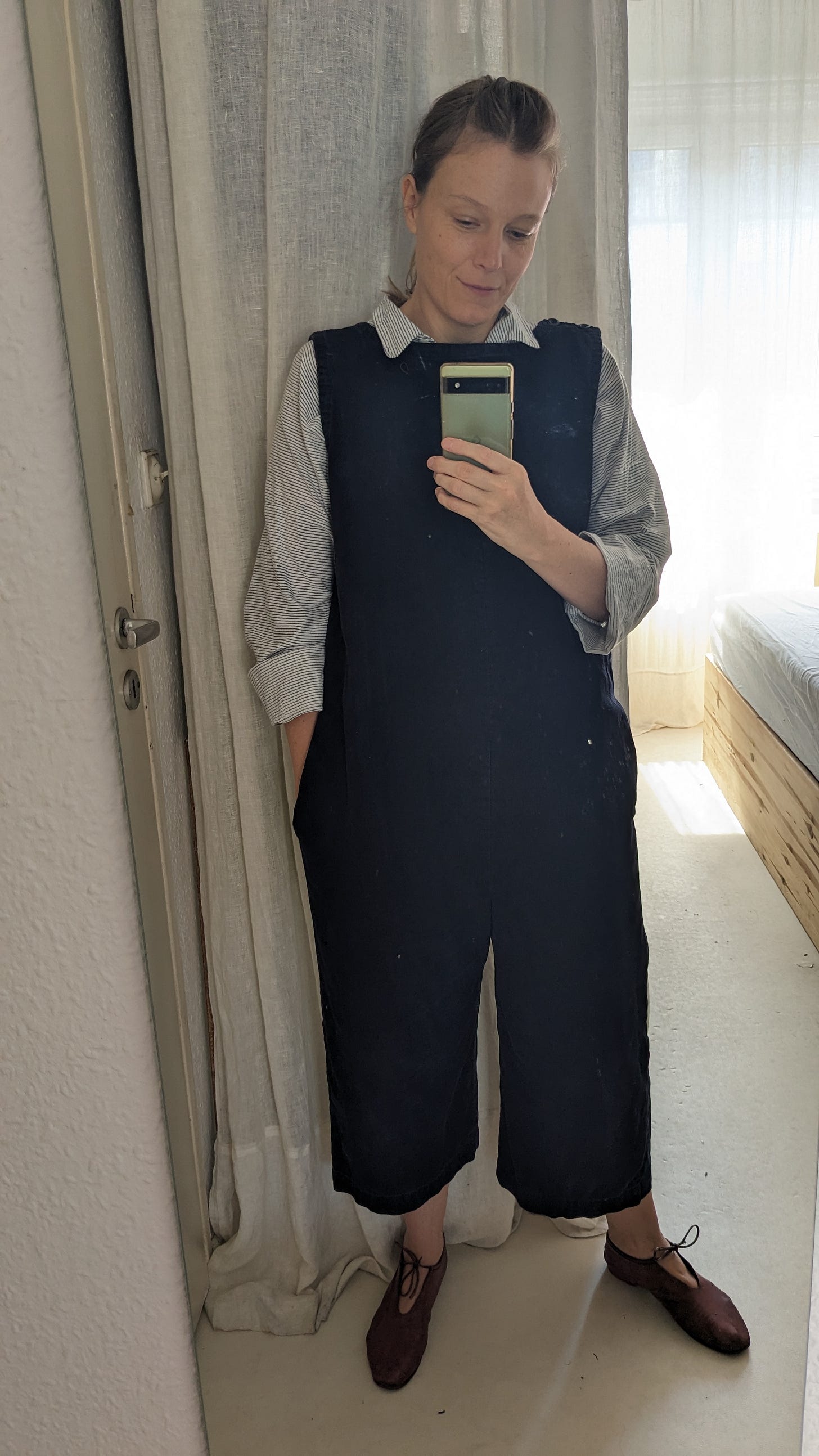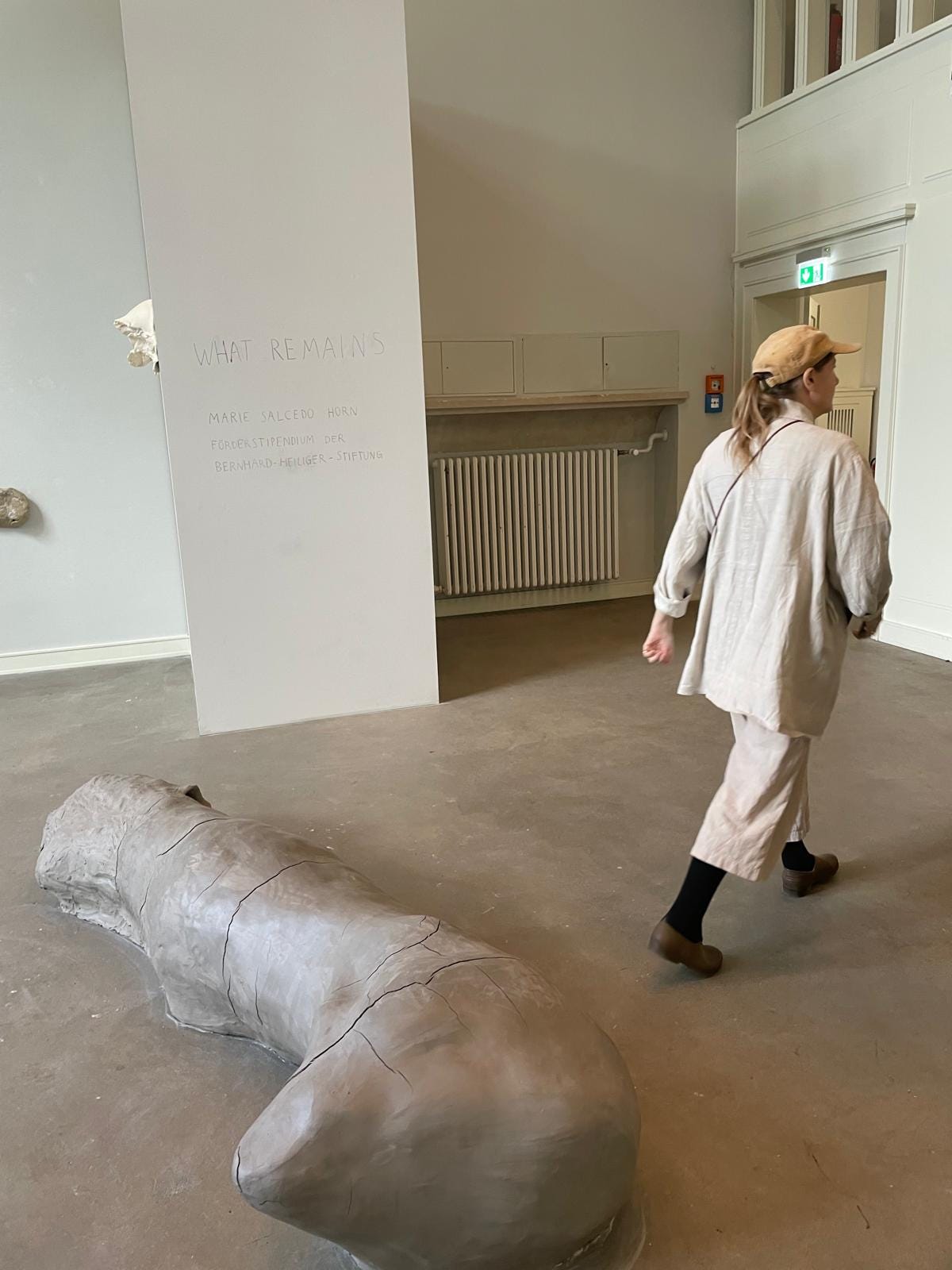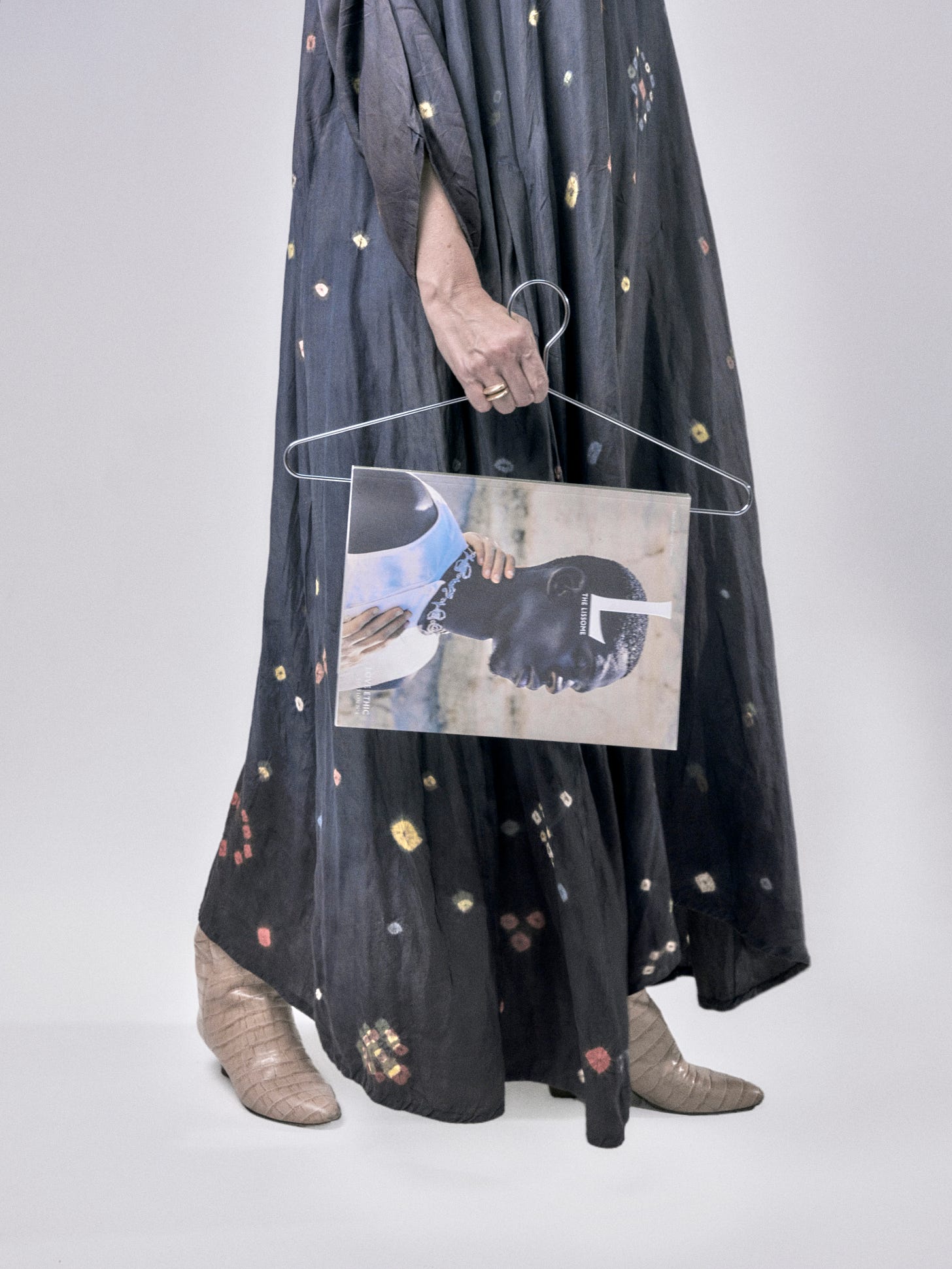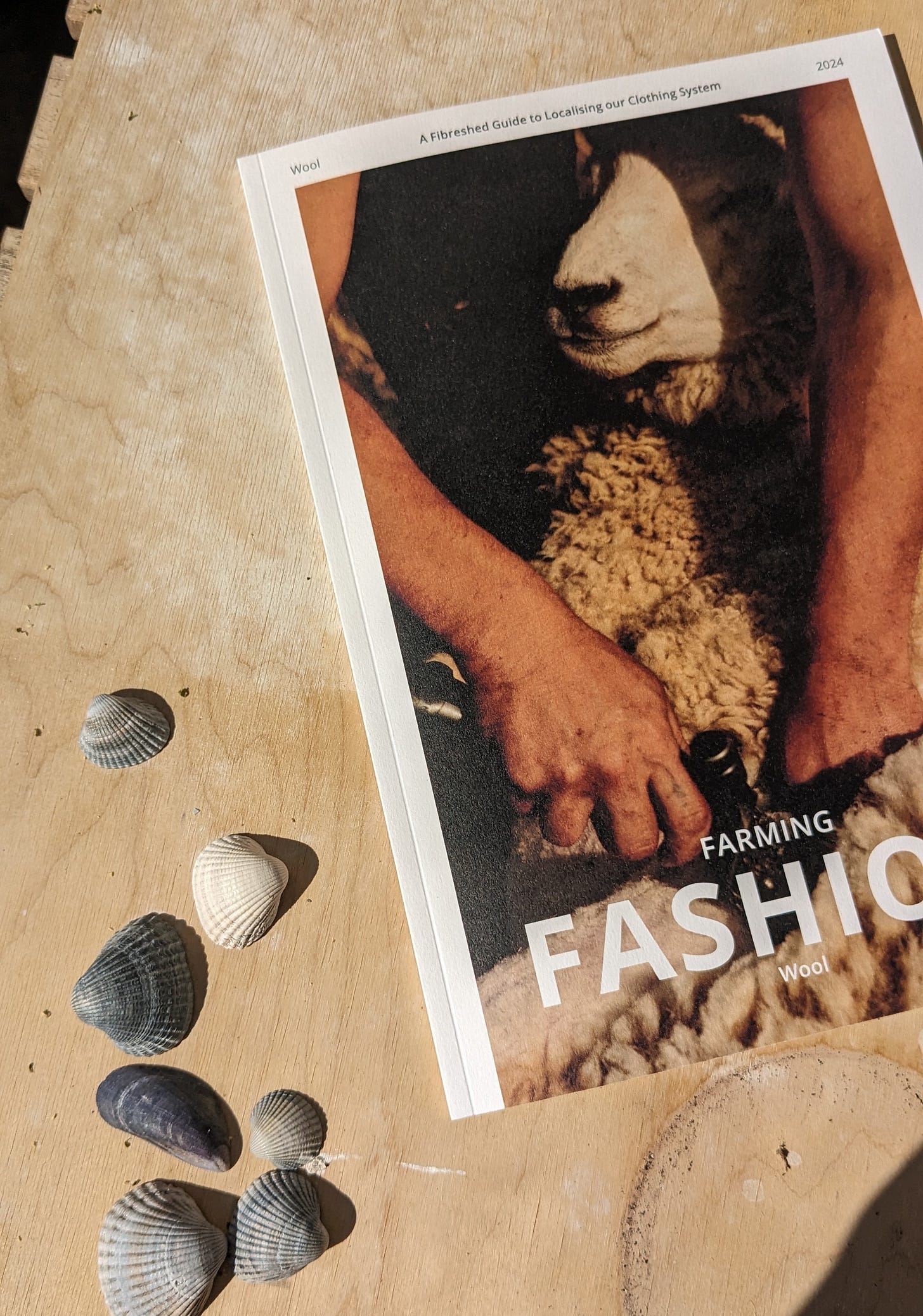TIDBTW Guest: Dörte de Jesus, founder & creative director The Lissome
Meet the person who has taught me the most about mindful fashion (this week at BFW!)
As I’m typing this, dear TIDBTW readers, I have Lauren Sherman in my ears. I don’t know if you are familiar with her podcast Fashion People, accompanying her weekly industry insights via her line sheet newsletter, but that woman is busy! Usually hopping from A to B, she mostly starts with giving her location, where she’s coming from and going to. So let me try this: I made it through the preparation weeks, now at my desk, looking out into the rain (not very July), a few emails, excel sheets and RSVPs away from my personal start of Berlin Fashion Week. First stop is the exquisite Vogue Fashion Fund reception, probably followed by missing a show, heading to a magazine launch and then the aura of high fives, stage fright and utter exhaustion at the opening dinner, depending who you’re talking to.
Looking at this week, I’m particularly excited I get to work with today’s TIDTBW Guest, Dörte de Jesus. When I first met Dörte at a pop up she was hosting in 2018, I was immediately drawn to her gentle, light aura. As she was opening the physical space for sustainable makers that day, she literally paved the way for slow, mindful fashion in Berlin. It is how she tells their stories in her annual print and ongoing online magazine, The Lissome, it’s the way she wears and collects all those labels she believes in and the way she carries herself, truthful to the message she spreads. You can listen to her in this incredibly charming and calming introduction to the current edition of the magazine Love Ethic, in The Lissome’s podcast
Quite literally a loving hug.
Dörte has influenced my way with compose PR in more than one way and since we locked eyes on that summer day, we’ve been lucky enough to collaborate and support each other over the past years. Dörte has incredible style, her art of carefully choosing the most unique and interesting patterns, silhouettes and designers, usually makes me want to reorganize my whole outfit after meeting her. Although she hates winter, she does cold months layers like noone else!! (A useful skill in Berlin)
On July 3 this week, we are holding an event, based on the little brand guide, that The Lissome is publishing alongside their magazine: The Book of Kin. Set in the stunning Bel Etage Salon of SO/ Berlin Das Stue Hotel, who is kindly hosting us, we are gathering the creme de la creme of outspoken changemakers for a panel talk “From Soil to Story: Blueprints for Sustainable Fashion, Paving the Way with Creativity, Conscious-Making, and Networks of Care.” But it’s not only the experts on the stage, such as Dr. Hauschka archivist Dr. Florian Öxler, who I have met before in their stunning wild garden and who shared fascinating anecdotes about the beauty brands’ beginnings. No, you can also meet the designers as there are 13 brands that we invited to showcase their collections and crafts - true to the original idea of a curated guide - next to a lino art print workshop with AVENIR (you remember those very good white trousers from earlier this year? exactly). So, we are all set for a cozy afternoon with an air of networking and would I like to invite you to it:
If you are in town, please come over! You can RSVP here (I told you, more RSVPs coming my way) or shoot me a message. While I’m wrapping up my homework, here’s a little introduction to Dörte via our TIDBTW Guest chat. Please enjoy and talk soon! x
TIDBTW Guest: Dörte de Jesus, founder and creative director, The Lissome
Things I didn’t buy this week: Who are you, what are you doing and how did you arrive where you are right now?
Dörte de Jesus: Hi, I am Dörte. Oh gosh, there are so many ways I could answer this question! I don't really feel like I have arrived anywhere, I am a continuous work in progress, ever-evolving and sometimes growing wiser along the way. I am very curious, I love reading widely, I feel deeply, on bad days I carry the weight of the world on my shoulders and on good days, I am madly in love with life. In human design, I am a 3/6 splenic projector, which speaks of a strong intuition, a lot of trial and error, and an often unusual and unique point of view. I think the fact that we are living on a small, green, and lush planet amid a gigantic universe is so surreal and mind-blowing, and I am often confused that this is not the hot topic of the day. Modernity has dampened mysticism, but I think it will have its comeback.
By profession, I am a designer, a creative problem solver, who likes to get to the core of things. I run my own studio, specialize in editorial design and art direction and occasionally dabble in styling and writing. Just recently, the magazine design and visual identity I created for TAUKO Magazine was awarded “Look of the Year” by Aikakausmedia, the Finnish association of media houses, and I was so happy to receive this recognition for this progressive and unconventional sewing publication.
Another huge part of my life is The Lissome, an annual print magazine and community that I’ve been planting and growing since 2016. It’s connected me with so many wonderful, like-minded creatives, people and places, and has become my ongoing source of hope in this world. It’s my passion and calling.
Right now, I am preparing for our first The Lissome showroom at Berlin Fashion Week, planning and prepping our exhibition at the beautiful SO/ Berlin Das Stue hotel. We are going to showcase a curation of incredible international brands from our slow clothing brand guide, The Book of Kin, and host a panel discussion and craft workshop. I can’t wait for everyone to meet and connect, and to share the beauty and philosophy of intentional fashion design and craftsmanship with the world.
TIDBTW: Can you remember the first fashion publication you felt drawn to as a young person?
DDJ: I grew up as a teenager in the 90ies and my adolescence was entirely analogue and without the internet. I am an Xennial, the microgeneration between GenX and Millennials. So print magazines were still a really big deal, like a lifeline to the larger world, especially when growing up in a small town like I did in the North of Germany. I remember that on every trip to Hamburg, I would pick up a copy of a free indie music magazine, called Intro, to dig into the latest album releases and reviews and look at the outfits of the bands. And every month, I eagerly awaited the new edition of Brigitte Young Miss, a somewhat progressive German teen magazine that, I guess, was a bit modeled on Sassy magazine from the US.
Here, I read about Riot Girls and bands like Sleater Kinney and Bikini Kill for the first time.
When I moved to London in the late 90ies after my A-levels, I fell in love with magazines like ID, Dazed and Confused and The Face and was blown away by how much more exciting and eccentric fashion was in the UK in comparison to my home country. I wasn’t really interested in traditional fashion magazines, but was drawn to subcultures of other eras, like Dada, Surrealism, Prog Rock, Folk, New Wave, and Post Punk. Through a close friend from the US, I found out about zines and even started my own. I published 3 editions, all done by hand and photocopied. I think I was about 20 at the time.
TIDBTW: Who has been / is your biggest inspiration for your personal style and how would you describe it?
DDJ: When I was younger, my style was pretty quirky, playful and eclectic, mixing different eras and influences. I found inspiration in music, and art and fashion history, and I remember discovering and enjoying the fashion sense of people like Elsa Schiaparelli, Marianne Faithful, Francoise Hardy, Poly Styrene of X-Ray Spex, Prince, Patti Smith ... Almost all my clothes were vintage and I spent pretty much every Sunday browsing flea markets (flea markets were so much more fun before fast fashion took over!). I remember wearing theatrical pieces from theatre archive sales, white socks with kitten heels, and I had an infatuation with bows.
Today, I would say, it’s a bit more toned-down and refined, with a focus on materials, textures and silhouette. I like to move freely, not be restricted and feel drawn to flowy, oversized garments in muted colours, voluminous dresses worn over trousers, workwear pieces and oversized jackets. I like my clothes to feel soft and gentle, fabrics have to feel good on my skin, and I only wear natural materials like linen, cotton, wool and silk. I get inspired by the many independent, slow clothing brands that I follow, and love the style of Anaak,
11.11, Injiri, Story mfg, babaà, and Matka, just to name a few (there are so many more!).
TIDBTW: You have created an incredible print magazine that comes out annually, holding stories around mindful fashion, poetry, climate activism and culture. How is your style affected by your work and your experience with the sustainable brands you interview or feature in editorials?
DDJ: I started The Lissome about eight years ago, and it’s really shifted my focus and awareness. Besides learning so much about how the production of clothing can be life-, culture-, and community-enhancing rather than harmful, I have come across so many amazing slow clothing designers and brands, who don’t just have great style, but also so much integrity, love for life, and perseverance. It’s not easy to be a small, mindful brand in our brash, corporate world, with the current system rigged for the large and uncaring players. So whenever I can afford to, I like to support independent, mindful brands.
At The Lissome, we defined some guidelines that we follow in our work with brands, and I also find them helpful for myself. Since working with slow fashion brands, I have gained a much deeper understanding, appreciation and respect for the work and craftsmanship that goes into the making of garments – from biodynamic agriculture to textile craft techniques to the design stage. When I look at a garment, I can’t help but immediately think about all the stories, relationships, and impact it holds. The beauty of working/communicating with and buying from independent, mindful brands is that these brands own their stories and can share them with you. This way, clothing becomes personal and full of meaning, which I love.
TIDBTW: How would you describe your relationship with buying (new) things?
DDJ: I love buying from small artisanal brands, but as this can be pricey, I am very discerning and I save up for special pieces. Usually, I only get new items when I am certain that I will wear them many times, and that they will give new dimensions to things I already own.
I find the impact-per-wear approach by Veronica Bates Kassatly very helpful. In this article, she breaks down in great detail “how the more times you wear a garment, the lower the production impact per wear will be,” and also the lower the price. It’s a longer read, but you will learn so much along the way and won't be so easily duped by greenwashing anymore – highly recommended!
THINGS YOU DIDN'T BUY - BUT THINK OF
TIDBTW: Are there some clothes in your past that you didn’t buy, but still think about? If you can, please give some examples.
DDJ: Currently, I don’t really have any regrets about clothes I didn’t buy, but there are many garments that I desire and marvel at from afar. These are either a bit too out of my budget or don’t feel essential enough yet to justify the purchase. Some garments have been on my wishlist for many years, and I wait for the right time or opportunity to come. For example, the knitwear of ound is exquisite and of the most gorgeous quality, and one day, I would love to purchase a piece.
Oh, and I sometimes still think about this cute colourful thin scarve and bright red beanie combination by Plās.
I really loved how they paired with my classic, dark-blue Lemaire coat that I was lucky to find in a winter sale almost ten years ago and that is still going strong. So yeah, actually, some little regrets here!
THINGS YOU BOUGHT AND WHY
TIDBTW: Can you name your highlight purchases of the last few years or ever?
DDJ: I bought a blue corduroy overall by Sarah Johnson some years ago that’s become my most reliable staple and work uniform. I just slip it on and I am fully dressed. It feels a bit like a happy toddler playsuit, ready for adventure. Plus, I can dress it up and down, it's my perfect no-fuss garment.
Last summer, I came across these cute French gardening shoes from Plasticana when prepping the styling for a photoshoot, and have been wearing them since.
Later, I saw that Emily Bode had used them in her Winter 2020/2021 collection. How adorable is this look!

My other highlight purchase was from 11.11., a gorgeous silk dress that I was lucky to find at their online archive sale. I am in awe of Indian textile crafts, and this piece is the perfect combination of elegant, effortless and totally unique.
And the last items I would mention are three bags that me and my husband designed for the Swiss brand MARAI. They are made from traceable Swiss goat’s leather in a short regional supply chain within a 150 km radius, including the vegetable tanning, manufacturing, and the sourcing of all components. I wear them all the time and love them to bits.
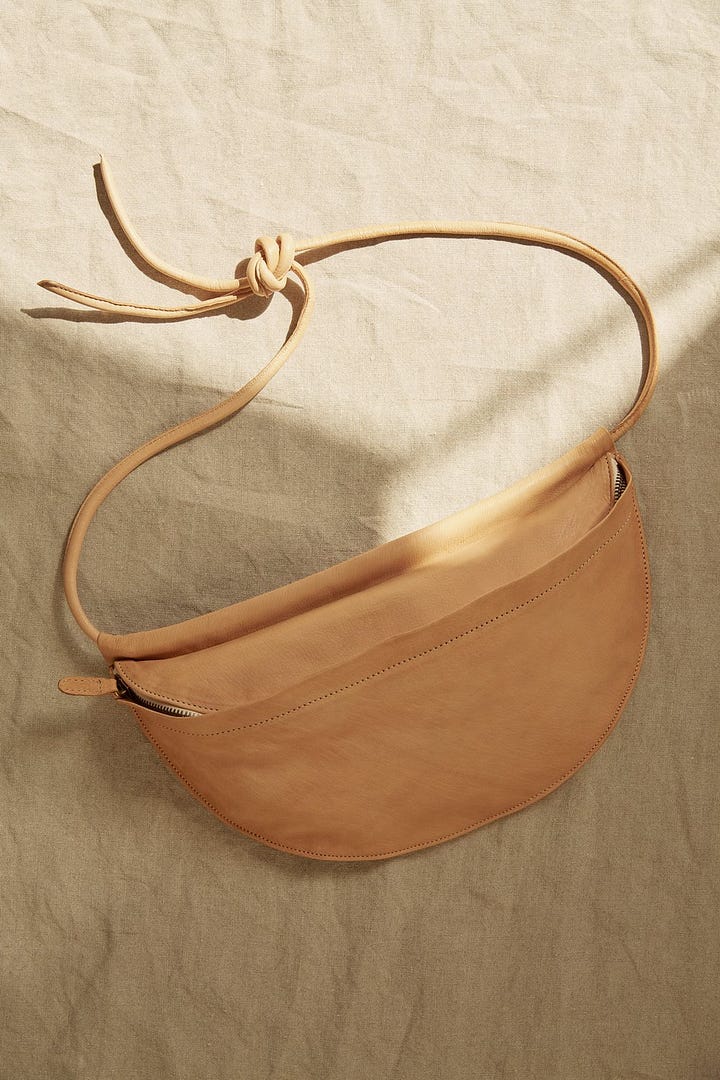
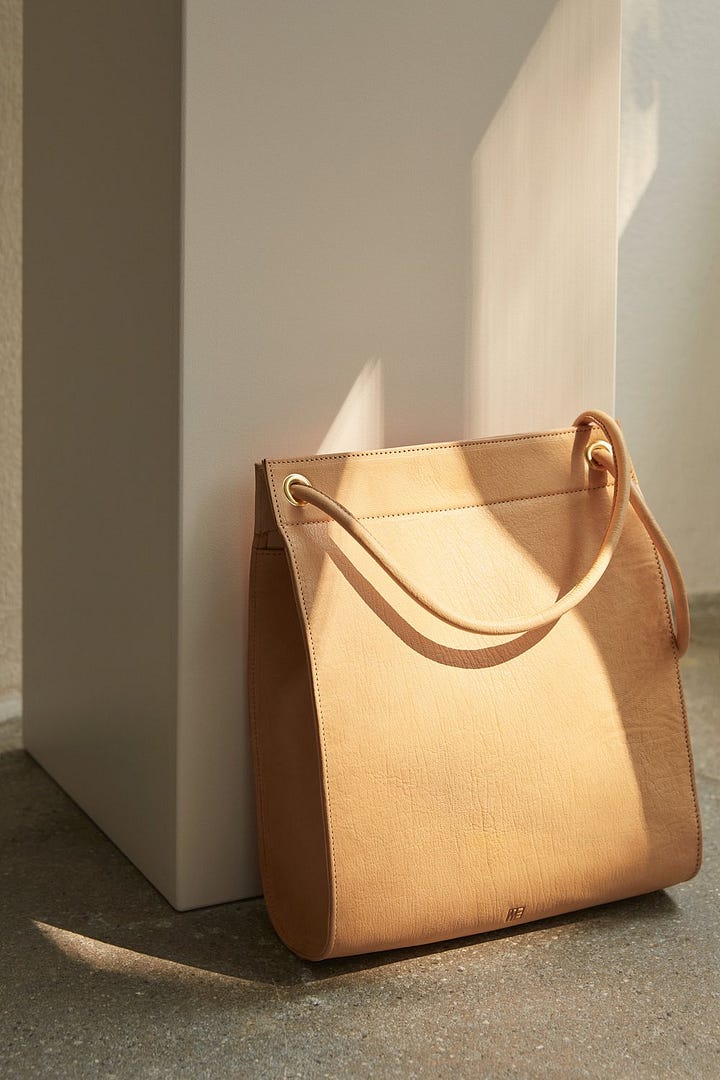
WISHLIST 2024
TIDBTW: Is there something on your wishlist for this year?
DDJ: I am looking for a perfect replacement for my classic black swimsuit that I bought over ten years ago, and wore and loved to death. My interim solution is a Barbie pink swimsuit that I found at a clothing swap in Bali, but I am not convinced. And I am on the look-out for breezy summer sandals that are elegant and comfy at the same time. I’d love to hear from you if you have any recommendations!
Editor’s note: I personally would go for this one by ADRIANA QUAISER, up for pre-order now:
Berlin Fashion Week and beyond
TIDBTW: You will host a showroom & panel at Berlin Fashion Week soon – do you already know what you will wear?
DDJ: If the weather allows, I am planning to wear a voluminous turquoise-coloured silk dress by Anaak, a brand I adore that is featured in this year’s The Book of Kin brand guide.
TIDBTW: What is sustainability in terms of fashion to you?
DDJ: For me it’s first and foremost about an expansive sense of wellbeing. I wish clothes to be an expression of respectful and caring relationships, created in healthy environments and supportive communities, without the use of harmful chemicals. This just feels like common sense to me. It’s not how our current system works, but it would be the most down-to-earth approach to treat everyone well. And with everyone I mean every being – be it the soil, the water, plants, animals, or humans. In all the years that I have been working in this field, the philosophy of the Fibreshed movement and their soil-to-soil approach are the most convincing and aspirational models I’ve come across.
Last year, I had the pleasure to work with them on the Farming Fashion: Wool publication, a guide for building partnerships between agroecological farmers and designers to restore wool supply networks in the British Isles that are beneficial for planet and people. Their work is grounded in a love for life, and if you don’t know it yet, I’d urge you to check it out.
TIDBTW: Thank you for sharing! <3


